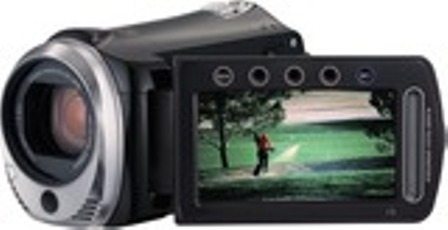Camcorders may not spring to mind when you think of cutting edge technology, but just because they’ve been around a while doesn’t mean technology isn’t constantly shaping, and reshaping, the camcorder market. In fact, thanks to new technologies, recording formats and designs, today’s camcorders are a far cry from models just a few years old. Here’s a look at some of the major trends:

Pocket camcorders – those portable, easy-to-use video cameras popularized by the Flip – have become all the rage of the camcorder market. And what’s not to like: they’re easy, cheap, offer decent quality and make sharing videos online simple. By some estimates they’ll make up about 2/3 of all camcorders sold.
This year, thanks to the success of the Flip, there are literally over a dozen competitors. That means these models are beginning to diversify, with features such as water-proofing, infrared and optical zooms emerging to help distinguish these video cameras from a very crowded field.
HD camcorders have been on the market for several years now, but this year they’re expected to cross over into 50 percent of the market. They’re still pricier than standard definition models (at least when talking about traditional – not pocket – camcorders) but those prices continue to fall sharply. You’ll find several feature-rich HD models, capable of 1920 x 1080 recording, for under $500.
Flash memory cards, the type found in digital cameras, are rapidly becoming the recording format of choice for digital camcorders. Camcorders that use flash memory are lighter, use less battery power and can store more video than any other format except for hard drives. The popularity of flash camcorders has all but crowded out DVD and tape formats, leaving only hard disk drives as an alternative.
Thanks in no small part to the use of flash memory, camcorders are getting tinier and more portable. That means you don’t have any excuse not to carry one around with you wherever you go.
What good is your video if you can’t share it, or turn it into 15 seconds worth of Internet fame? While the higher-end HD camcorders are less computer-friendly, a number are using the H.264 video format for easier editing and viewing on a computer. Together with built-in upload buttons that send video off to YouTube whenever the camcorder is connected to a computer, today’s camcorders are more Web-friendly than ever before.
While it’s not front and center in many of the specs, the type of image sensor used in a camcorder is critically important. In 2010, a new version of the CMOS image sensor will be more popular with higher-end models. The so-called “back illuminated” CMOS technology offers improved video quality performance where it counts the most: low light environments.
Connecting your camcorder to a computer or TV isn’t the hardest thing in the world, but it could still stand to be easier. At least two camcorder makers thus far have introduce products with a form of wireless networking. Samsung has added Wi-Fi to a trio of high-end HD camcorders, while JVC has announced a camcorder with built-in Bluetooth. Given that camcorder video files are very large, it remains to be seen whether wireless offers a viable alternative to the tangle of cables, but this is the year we’ll find out.
Published on June 9, 2010





